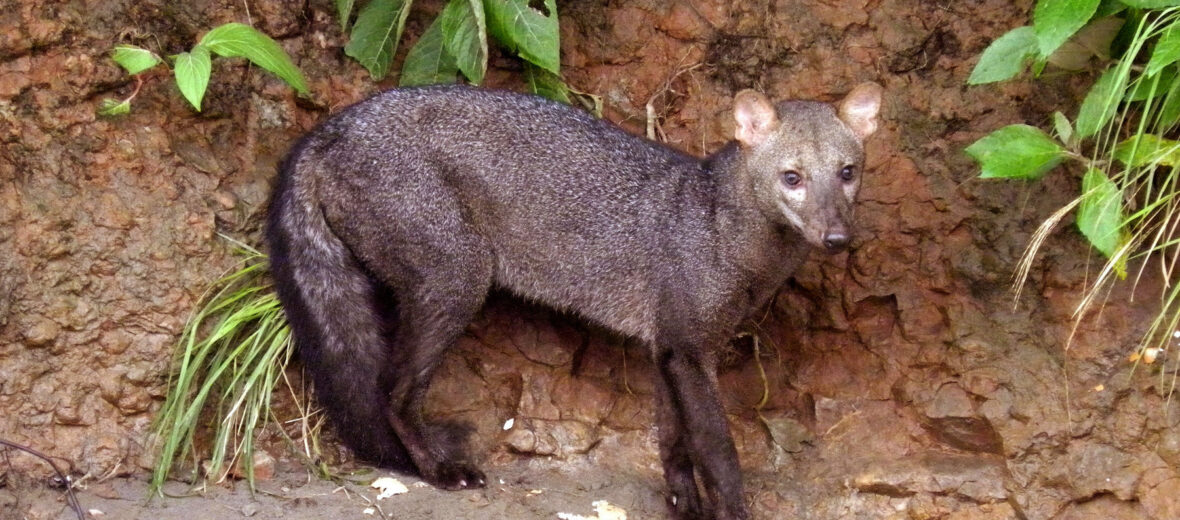
Native to South America it’s the short-eared dog, aka small-eared dog or short-eared zorro. They prefer the lowland rainforests, terra firme forests, and bamboo areas of the Amazon, near streams, rivers, or swamps. Zorros were first discovered in 1969 but there is still much to learn about them. Due to diseases transmitted by domesticated dogs and rapid habitat loss, these intriguing canids are listed as Near Threatened by the IUCN.
First the Stats…
Scientific name: Atelocynus microtis
Weight: Up to 18 lbs.
Length: Up to 39 inches, plus up to a 14 inch tail
Lifespan: Unknown
Now on to the Facts!
1.) There are 2 subspecies of these cute critters: Atelocynus microtis microtis and Atelocynus microtis sclateri.
2.) To mark their territory, they will spray a stinky musk from glands located at the base of their tail.
3.) These dogs move more like cats do, with a slinky motion.
4.) Short-eared zorros can be found in Bolivia, Brazil, Ecuador, Colombia, and Peru.
5.) Females are about a third larger than males, but they are otherwise not sexually dimorphic.
But wait, there’s more on the short-eared dog!
6.) Like most dogs, they are diurnal (active during the day).
7.) These elusive creatures eat insects, fish, reptiles, birds, small mammals, and even fruit; thus making them omnivores.
Did you know…?
The short-eared dog has partially webbed paws to help with swimming and moving on the slippery ground near water.
8.) A young short-eared dog is called a whelp or a pup.
9.) They are mostly solitary but can be found hunting in pairs.
10.) Boa constrictors and jaguars are their main predators.
Now a Short Short-Eared Dog Video!
Also, check out the Critter Science YouTube channel. Videos added frequently!
Want to suggest a critter for me to write about? Let me know here.



